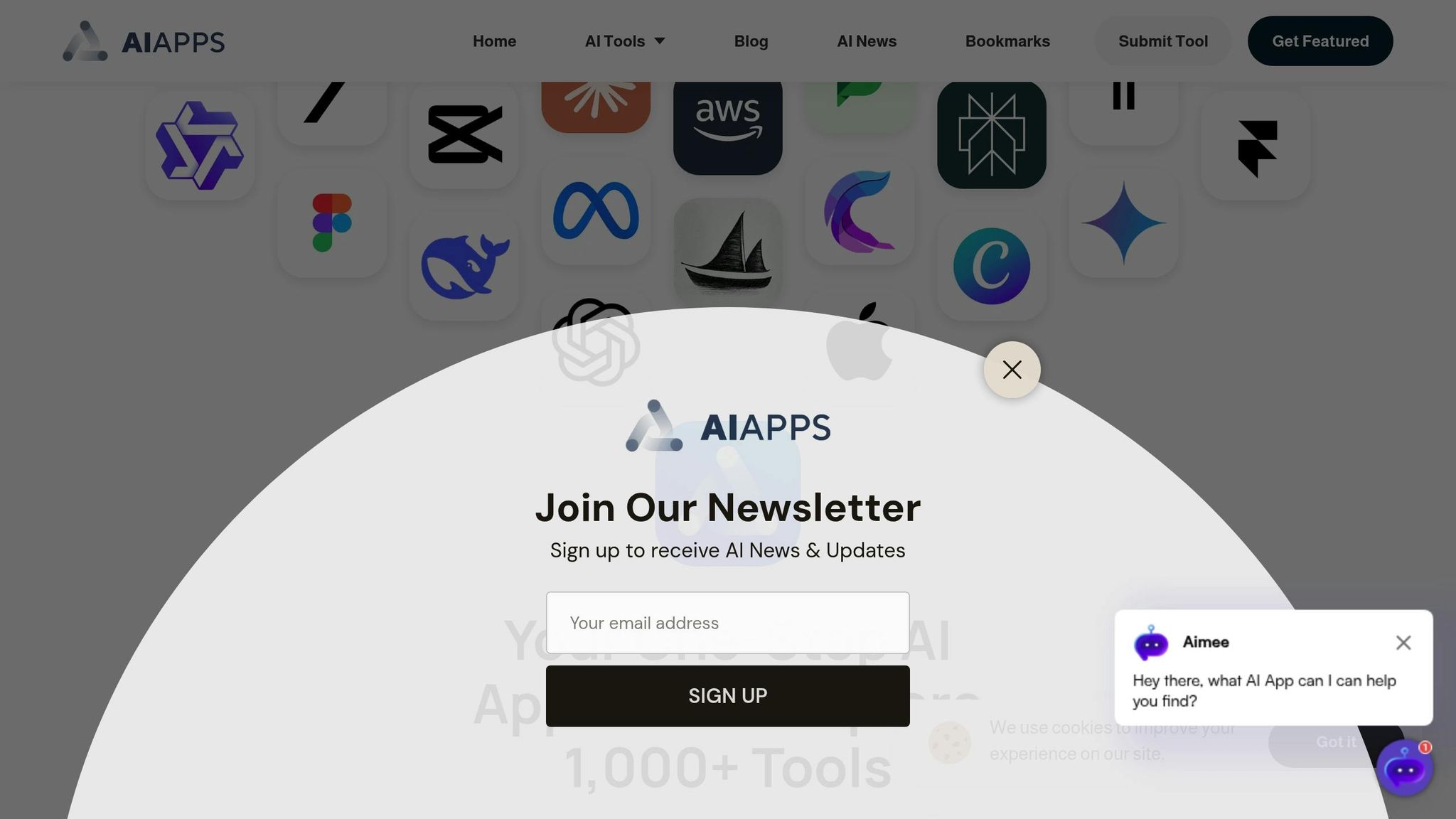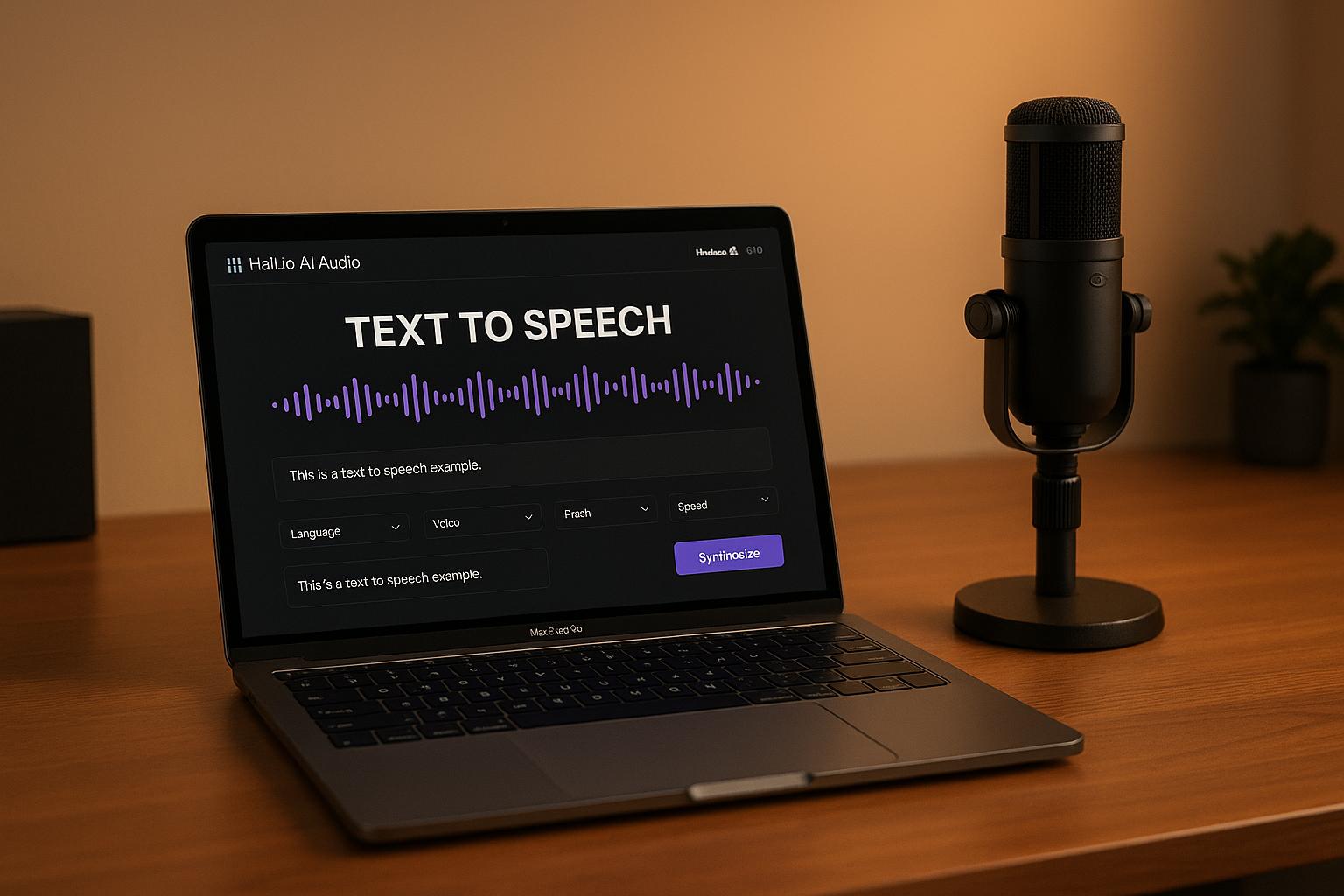Managing social media can be overwhelming, but AI tools offer a way to simplify the process. Here's the challenge: balancing efficiency with the personal touch. AI tools automate tasks like scheduling, generating captions, and analyzing data, saving time and resources. Meanwhile, manual management excels at delivering nuanced, human interactions and maintaining a brand's voice.
Key Takeaways:
- AI Tools: Automate repetitive tasks, analyze data, and maintain posting schedules efficiently. Great for scaling and consistency but may lack emotional depth.
- Manual Methods: Offer personalized responses and creative flexibility. Ideal for building genuine connections but are more time-intensive and harder to scale.
- Best Approach: Combine both - use AI for efficiency and humans for creativity and engagement.
Quick Comparison:
| Aspect | AI Tools | Manual Methods |
|---|---|---|
| Speed | Fast, automated processes | Slower, requires hands-on effort |
| Engagement | Instant but impersonal responses | Personalized but time-limited |
| Scalability | Handles multiple accounts with ease | Requires more staff as demands grow |
| Cost | Subscription-based | Staffing costs increase with workload |
| Creativity | Limited to algorithms | Full creative control |
Bottom Line: Use AI for efficiency and data-driven insights while relying on human management for emotional connection and brand consistency.
AI is Changing Social Media Management: What You NEED to Know in 2025
Manual Social Media Management Explained
Manual social media management involves a hands-on approach where a dedicated team manages a brand's online presence. This method relies on human judgment to craft content, interact with the audience, and make decisions that align with the brand's personality and goals.
Main Tasks in Manual Social Media Management
When managing social media manually, teams typically focus on these core responsibilities:
- Content creation: Coming up with ideas, writing posts, and designing visuals.
- Scheduling and publishing: Posting content across various platforms at optimal times.
- Audience engagement: Responding to comments, messages, and mentions to build connections.
- Performance monitoring: Using analytics tools to track how posts are performing.
- Campaign planning: Strategizing and organizing campaigns to meet marketing objectives.
While these tasks are crucial, they come with their own set of advantages and challenges.
Benefits of Manual Social Media Management
This approach offers several advantages:
- Provides the ability to craft thoughtful, personalized responses to customer feedback.
- Allows teams to adapt quickly to trends or real-time events with creative content.
- Ensures a consistent brand voice through direct, human interaction.
- Enables thorough quality checks by reviewing content before it goes live.
Problems with Manual Social Media Management
Despite its strengths, manual management has its drawbacks:
- Time-consuming: Creating and managing content manually can slow down the posting frequency.
- Scaling issues: Managing multiple platforms simultaneously becomes harder as the workload grows.
- Human limitations: Teams can't be available 24/7, which may impact timely engagement.
- Increased error risk: Juggling numerous tasks can lead to mistakes.
- Team fatigue: Sustained effort required for engagement and content creation can wear out the team over time.
AI Social Media Management Tools: Features and Benefits
AI-powered tools are transforming how businesses manage their social media presence by automating tasks that once demanded significant human effort. These platforms use machine learning to streamline operations, enabling companies to handle their social media marketing with greater ease and efficiency.
Key Features of AI Tools
Modern AI tools come packed with features that make managing social media simpler and more effective. Here’s what they bring to the table:
- Automated content creation: These tools generate posts, captions, and visuals based on your brand’s guidelines and trending topics. They can even create multiple variations of content tailored for different platforms, saving time and effort.
- Smart scheduling: By analyzing audience behavior and engagement patterns, AI tools determine the best times to post, ensuring your content reaches more people when they’re most active.
- Instant engagement: Using natural language processing, these tools can respond to comments, messages, and mentions in real-time, keeping conversations flowing - even outside regular business hours.
- Performance prediction: AI tools analyze historical data and current trends to forecast how well your content will perform, giving you the chance to tweak strategies before publishing.
Why Businesses Love AI Tools
The benefits of AI tools extend well beyond automation. They help businesses operate more efficiently, make smarter decisions, and deliver consistent results - all while keeping costs down.
- Scaling with ease: AI tools handle repetitive tasks, allowing businesses to manage multiple social media accounts across various platforms without needing to expand their teams.
- Data-driven insights: These platforms process massive amounts of data to uncover trends, audience preferences, and strategies that might not be obvious through manual analysis.
- Consistent quality: AI ensures that content aligns with brand standards across all platforms, maintaining a steady level of quality over time.
Challenges and Limitations
While AI tools are powerful, they’re not without their flaws. Some of the main drawbacks include:
- Lack of creativity: AI-generated content, while accurate, can feel uninspired or fail to capture the emotional depth needed to truly connect with audiences.
- Limited cultural understanding: AI may struggle with cultural nuances, humor, or sensitive topics that require a human touch.
- Perceived inauthenticity: Automated responses can sometimes feel impersonal, leading audiences to disengage when they realize they’re interacting with a machine.
- Ongoing human oversight: Despite their capabilities, AI tools still need regular monitoring to ensure they stay aligned with brand values and handle unexpected situations appropriately.
These challenges underscore the importance of using AI tools thoughtfully and in combination with human expertise.
How AI Apps Simplifies Social Media Management

To address these challenges, AI Apps offers a centralized platform that brings together over 1,000 carefully curated AI tools designed to streamline social media management.
- Targeted filtering: AI Apps makes it easy to find tools tailored to your needs by allowing you to search by category, sub-category, or pricing model. This saves time and ensures you find solutions that fit both your requirements and budget.
- Diverse content creation tools: From AI text generators for captions to AI art and video tools for creating engaging visuals, the platform provides everything you need to keep your social media feeds dynamic and engaging.
- Automation made simple: AI Apps features tools that integrate seamlessly with your existing platforms, helping you automate scheduling, posting, and basic engagement tasks.
- Verified quality: Every tool listed on AI Apps goes through a verification process to ensure it meets quality standards. This means you can confidently choose tools without worrying about reliability.
- Options for every budget: Whether you’re a startup exploring AI or an established business looking for advanced solutions, AI Apps offers both free and paid tools to match your financial needs.
AI Apps is designed to take the guesswork out of finding the right tools, making social media management not just easier but also more effective.
sbb-itb-212c9ea
AI Tools vs Manual Methods: Side-by-Side Comparison
When it comes to managing social media, AI tools and manual methods bring different strengths and challenges to the table. Each approach offers unique benefits that can shape how you execute your social media strategy.
Comparison Table
Here’s a closer look at how AI-powered tools stack up against manual social media management across key aspects:
| Aspect | AI Tools | Manual Methods |
|---|---|---|
| Content Creation Speed | Quickly generates multiple post variations using automation | Requires more time for research, writing, and editing each post |
| Scheduling Efficiency | Automatically schedules posts based on optimal timing data | Involves hands-on scheduling for each post, which can be more time-intensive |
| Audience Engagement | Provides instant, automated responses around the clock | Offers personalized, authentic interactions, typically limited to standard working hours |
| Analytics and Insights | Analyzes large data sets quickly, identifying trends and patterns | Relies on manual data collection, which can limit both speed and depth of insights |
| Personalization | Uses algorithms to customize content for different audience segments | Delivers highly tailored content based on a nuanced understanding of individual followers |
| Cost Structure | Often involves a subscription fee that varies by features and usage scale | Requires staffing expenses, which grow as social media demands increase |
| Scaling Potential | Manages multiple accounts and posts efficiently without extra personnel | Needs additional team members to handle an expanding workload |
| Creative Flexibility | Works within programmed parameters, sometimes missing emerging trends | Allows full creative control and quick adjustments to current events or cultural moments |
| Error Management | Produces consistent output but may overlook subtle contextual nuances | Relies on human judgment to reduce contextual errors, though occasional mistakes still occur |
| Learning Curve | Involves setup and training, followed by ongoing optimization | Can be implemented immediately using the existing team’s expertise |
AI tools shine when it comes to efficiency, scalability, and handling large volumes of data or accounts. They’re ideal for businesses looking to automate repetitive tasks or manage high posting frequencies. On the other hand, manual methods excel in creativity, authenticity, and cultural awareness, allowing for deeply personalized content and engagement.
This side-by-side comparison helps you evaluate which approach - or blend of both - can best align with your social media goals.
How to Choose Between AI Tools and Manual Methods
Deciding between AI tools and manual approaches for managing social media involves weighing several factors. Often, the best solution is a mix of both.
Key Factors to Consider
Budget and resources are crucial. AI tools come with subscription costs, while manual methods require investing in salaries and scaling staff as needed.
Brand voice plays a significant role. If your messaging needs a high level of nuance or cultural awareness, human creativity is hard to beat. On the other hand, brands with simpler, more straightforward updates may find AI tools sufficient for maintaining a consistent tone.
Audience expectations are another consideration. Some customers are fine with automated responses for routine questions, but others value the personal touch that only a human can provide.
Content volume and posting frequency can also dictate the approach. If you’re managing high volumes of content across multiple platforms, automation becomes almost essential. Smaller operations, however, might manage just fine with manual methods.
Industry regulations are especially important in fields like finance, healthcare, or law. These sectors often require human oversight to ensure all communications meet strict compliance standards.
Technical skills within your team can also influence your choice. Teams with a solid tech background can adapt to AI platforms more easily, while those with less experience might prefer manual processes for reliability.
These factors can help you determine the right balance between AI efficiency and human creativity.
Using Both AI Tools and Manual Methods Together
A hybrid approach often delivers the best results.
AI can handle tasks like drafting posts, suggesting hashtags, and scheduling routine updates. Meanwhile, humans can step in to refine content, ensuring it reflects the brand's personality and voice. AI is great for managing repetitive tasks and providing data insights, while humans excel at handling time-sensitive interactions and aligning strategies with broader business goals.
Different social media platforms may require different strategies. For instance, professional networks benefit from consistent, data-driven content, while creative platforms thrive on human spontaneity and interaction. The key is to decide which tasks are better suited for AI and which require human judgment, then establish review processes to maintain both efficiency and authenticity.
If you're looking to integrate AI tools into your workflow, AI Apps is a great place to start. With a curated library of over 1,000 AI tools and advanced filtering options, AI Apps helps businesses find solutions that complement their existing manual processes, making the transition smoother and more effective.
Conclusion: Finding the Right Balance for Social Media Management
Striking the right balance between AI tools and hands-on methods depends on your specific business needs, budget, and goals.
AI tools are fantastic for managing multiple accounts and handling large volumes of content. However, maintaining an authentic voice, managing sensitive interactions, and making strategic decisions often require a human touch. On the other hand, manual management fosters creativity and personal connection but can become overwhelming as your social media presence grows. The sweet spot for most businesses lies in combining AI's efficiency with the creative and emotional intelligence of human management. This approach ensures your operations run smoothly while keeping your brand's personality intact.
For instance, if routine tasks like scheduling posts or generating hashtags eat up too much of your time, AI tools can take over those responsibilities. But if your brand voice feels inconsistent or disconnected, increasing human involvement can help bring it back on track.
The key is to start small, experiment with different combinations, and refine your strategy as your audience and goals evolve. By blending AI's efficiency with human creativity, you can create a social media presence that's both effective and engaging.
FAQs
How can businesses balance AI tools with manual social media management to maintain their brand’s unique voice?
To strike the right balance between AI tools and manual social media management, businesses should begin with a comprehensive brand voice guide. This guide should clearly outline the tone, personality, and core values of the brand, ensuring that any content generated by AI stays true to the brand’s identity.
Once the guide is in place, businesses can train their AI tools using well-crafted examples and detailed prompts that mirror the desired communication style. It's important to routinely evaluate and fine-tune the AI's outputs to maintain consistency and ensure the content feels authentic.
Lastly, blending AI-generated content with human oversight adds a personal touch. This approach helps brands connect with their audience in a way that feels both relatable and professional, striking the perfect balance between efficiency and engagement.
What tasks can AI tools handle in social media management, and how do they improve efficiency?
AI tools are revolutionizing how social media tasks are handled by taking over time-consuming activities like crafting posts, designing images, and creating videos. They can also handle scheduling, reposting content, and tailoring material to fit the unique demands of different platforms. Beyond content creation, these tools can engage with audiences by using chatbots to reply to comments and messages and even analyze performance metrics to fine-tune strategies.
This automation doesn’t just save time - it frees up teams to channel their energy into more creative and strategic projects. By simplifying workflows, businesses can maintain a steady online presence while making their social media efforts more impactful.
Why might a business choose manual social media management instead of using AI tools, even if it requires more effort?
Businesses often choose manual social media management when maintaining control over content quality, tone, and brand identity is a top priority. AI tools, while efficient, can sometimes miss the subtle nuances that make a brand's voice unique. This hands-on approach becomes especially important for industries where personalized engagement or a deep connection with niche audiences is key.
For companies operating in tightly regulated or culturally sensitive markets, manual management also provides an extra layer of assurance. It helps ensure compliance with specific rules and allows for a more customized strategy - something AI tools might not always handle effectively. While AI offers time-saving benefits, manual oversight brings a level of precision and a personal touch that technology often can't match.



